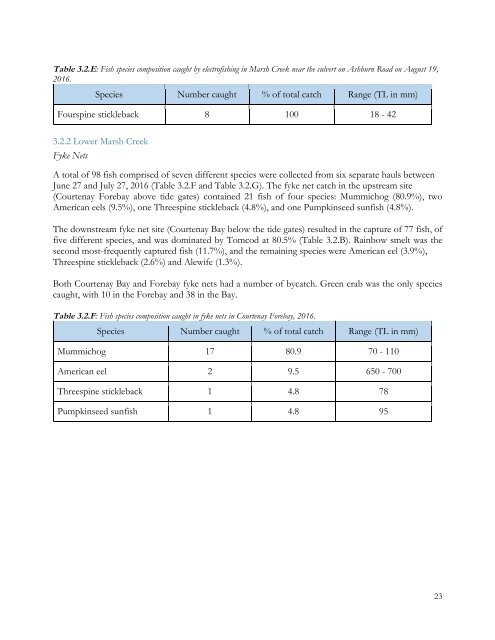Rebirth of Water Report 2016-2017
Marsh Creek, which is the largest watershed in greater Saint John, has been the recipient of centuries of untreated municipal wastewater deposition. Offensive odours, unsightly sanitary products and the threat posed by various human pathogens, resulting largely from the ~50 sewage outfalls in the lower reaches of Marsh Creek and the Saint John Harbour, have caused most residents to abandon the wellness of the watercourse. ACAP Saint John, a community-based ENGO and champion of the Harbour Cleanup project, has been conducting water quality monitoring and fish community surveys in the watershed since 1993 with the view towards someday restoring the ecological integrity of this forgotten natural asset.
Marsh Creek, which is the largest watershed in greater Saint John, has been the recipient of centuries of untreated municipal wastewater deposition. Offensive odours, unsightly sanitary products and the threat posed by various human pathogens, resulting largely from the ~50 sewage outfalls in the lower reaches of Marsh Creek and the Saint John Harbour, have caused most residents to abandon the wellness of the watercourse. ACAP Saint John, a community-based ENGO and champion of the Harbour Cleanup project, has been conducting water quality monitoring and fish community surveys in the watershed since 1993 with the view towards someday restoring the ecological integrity of this forgotten natural asset.
You also want an ePaper? Increase the reach of your titles
YUMPU automatically turns print PDFs into web optimized ePapers that Google loves.
Table 3.2.E: Fish species composition caught by electr<strong>of</strong>ishing in Marsh Creek near the culvert on Ashburn Road on August 19,<br />
<strong>2016</strong>.<br />
Species Number caught % <strong>of</strong> total catch Range (TL in mm)<br />
Fourspine stickleback 8 100 18 - 42<br />
3.2.2 Lower Marsh Creek<br />
Fyke Nets<br />
A total <strong>of</strong> 98 fish comprised <strong>of</strong> seven different species were collected from six separate hauls between<br />
June 27 and July 27, <strong>2016</strong> (Table 3.2.F and Table 3.2.G). The fyke net catch in the upstream site<br />
(Courtenay Forebay above tide gates) contained 21 fish <strong>of</strong> four species: Mummichog (80.9%), two<br />
American eels (9.5%), one Threespine stickleback (4.8%), and one Pumpkinseed sunfish (4.8%).<br />
The downstream fyke net site (Courtenay Bay below the tide gates) resulted in the capture <strong>of</strong> 77 fish, <strong>of</strong><br />
five different species, and was dominated by Tomcod at 80.5% (Table 3.2.B). Rainbow smelt was the<br />
second most-frequently captured fish (11.7%), and the remaining species were American eel (3.9%),<br />
Threespine stickleback (2.6%) and Alewife (1.3%).<br />
Both Courtenay Bay and Forebay fyke nets had a number <strong>of</strong> bycatch. Green crab was the only species<br />
caught, with 10 in the Forebay and 38 in the Bay.<br />
Table 3.2.F: Fish species composition caught in fyke nets in Courtenay Forebay, <strong>2016</strong>.<br />
Species Number caught % <strong>of</strong> total catch Range (TL in mm)<br />
Mummichog 17 80.9 70 - 110<br />
American eel 2 9.5 650 - 700<br />
Threespine stickleback 1 4.8 78<br />
Pumpkinseed sunfish 1 4.8 95<br />
23


















